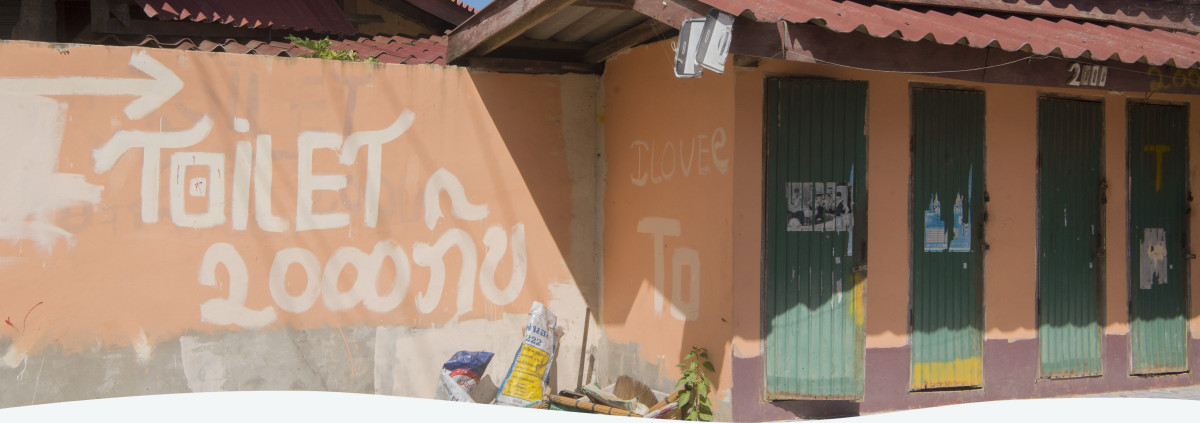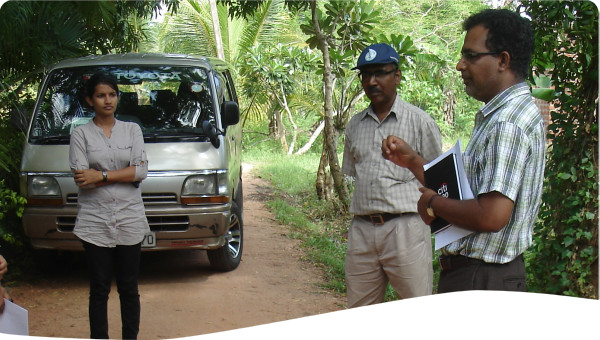Lao People's Democratic Republic (PDR) faces considerable challenges in the delivery of sustainable and equitable access to sanitation in rural areas. Small steps have been taken towards increasing national ownership of and political commitment to sanitation in Lao People's Democratic Republic. As a lesson learnt; there is no one blueprint for progress in sanitation delivery. Services can be delivered in different ways – e.g. household investment or direct programmatic efforts.
Lao People's Democratic Republic is located in Southeast Asia and is a relatively small, landlocked, and subsistence-oriented nation. The 2008 population was estimated at 6.2 million, with approximately 84% population are poor and rural inhabitants, with almost 2 million rural dwellers falling below the poverty line. More than half the population lives in upland areas with a critical lack of infrastructure (water, road, telecoms, and electricity), presenting huge technical, social, and physical challenges to sanitation service delivery. This geographic constraint presents a major challenge to the provision of a sustainable and equitable water supply and sanitation.
The country is one of the most ethnically diverse in the world, with 49 official ethnic groups comprising some 200 ethnic subgroups. The variety of languages that different ethnic groups speak makes including these groups in national development very complex. The government has suffered from a chronic lack of financial and human capacity for water supply and sanitation (WSS) provision. In the 1980s, there was very little in Lao People's Democratic Republic by way of sanitation service delivery and supporting policies and institutions. Nevertheless, the country has made progress since 1990 in increasing access to improved sanitation in rural areas.
This is a story of rapidly increasing access to improved sanitation and of gradually improving government systems for service delivery. This progress is to an extent ‘unsung’ – Lao People's Democratic Republic’s current sanitation challenges tend to eclipse its positive steps forward. But progress has been made in a difficult sector from an extremely low base, even if major challenges remain.
There have been three major interrelated reform processes:
- development (1997), revision (2004) and implementation of a national strategy for rural water supply and sanitation;
- creation and capacity building of the National Centre for Environmental Research.
Progressive institutionalization of ‘improved’ approaches to service delivery, including an increased focus on demand responsiveness, community participation and hygiene promotion took place as a result of reforms. Household investment in latrine construction largely remained unsubsidized and driven by non-poor rural households living close to roads and markets. More so, the government requirement, in some areas, for people to build latrines in order to receive a water supply and exposure of some households to hygiene messages.
Service delivery has focused largely on rapid construction, which has contributed to the fast-paced coverage expansion. The dominant technology has been pour-flush latrines, because they are odour-free and more hygienic. Getting large numbers of people on the sanitation ladder is arguably good progress. Government ownership and the politics of sanitation: Small steps have been taken towards increasing national ownership of and political commitment to sanitation in Lao People's Democratic Republic. The government is relatively open to sanitation ideas and investment. In 2008, it established a National Steering Committee for Sanitation to oversee International Year of Sanitation activities, which marked a step forward.
Lao PDR has achieved considerable increases in sanitation coverage in rural areas. The country has also made progress in terms of developing policies, institutions and methodologies to more effectively deliver rural WASH services. In terms of equity, progress has been less clear: it appears that more affluent and non-poor rural populations and rural villages with access to roads have made most of the gains.
As for sustainability, coverage has increased progressively over the past two decades, although serious questions are raised as to whether resource allocation to the sector is sufficient to maintain and reinforce this trend. Equally, in spite of progress in promoting demand responsiveness and behavioural change, there are doubts about the sustainability of sanitation provision with regard to the operation, maintenance and hygienic use of latrines over time. Overall, however, the prospects for further progress are good, despite the slow pace. As one interviewee put it, it ‘is all to be played for now and there is a sense that things are going in the right direction'.
The main drivers of progress include:
- internal policy and institutional change and capacity building;
- a mode of service delivery driven by household private investment, mostly unsubsidised;
- sanitation hardware, technology and infrastructure provision with a focus on rapid coverage increase;
- external development finance for capacity building and Nam Saat operations;
- government financing of staff salaries and administration as well as Nam Saat commitment and hard work; and
- the government’s (passive) acceptance of reform and the (slow) process of increasing government ownership of rural sanitation issues.
Wider socioeconomic progress and levels of inequality may have a significant impact on access to basic sanitation. In Lao PDR, household investment in latrines has been connected in part to rising incomes for some groups.
In Lao People's Democratic Republic, coverage targets, such as those in the MDGs, are cited as one reason for the rapid latrine construction. However, such targets risk drawing attention away from sustainability and equity outcomes.
Promotion of sanitation and hygiene education and social mobilization in Lao People's Democratic Republic has slowed progress towards the provision of more sustainable sanitation systems. Changing cultural practices is complex, however, often requiring considerable time, resources and effort.
There is no one blueprint for progress in sanitation delivery. Services can be delivered in different ways – e.g. household investment or direct programmatic efforts – and leveraging the most appropriate mode of delivery and selecting suitable technology.
 Case studies
Case studies


